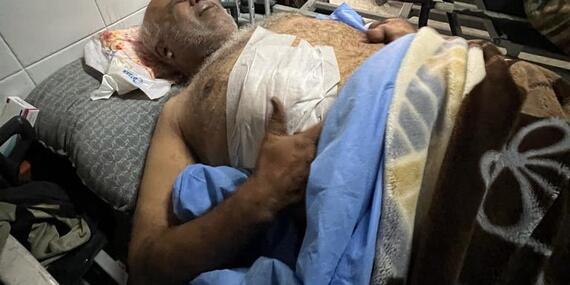Today's top news: Occupied Palestinian Territory, Central African Republic

Gaza
The Under-Secretary-General for Humanitarian Affairs, Martin Griffiths, said in a social media post yesterday that the conflict has reached another tragic and shameful milestone, with the reported death of 20,000 people, according to local authorities. He said that the fact that such a brutal conflict has been allowed to continue and for this long – despite the widespread condemnation, the physical and mental toll and the massive destruction – is an indelible stain on our collective conscience.
Yesterday, the Israeli military designated a new area covering about 20 per cent of central and south of Khan Younis city for immediate evacuation. The area was marked in an online map published on social media. Prior to the onset of hostilities, this area was home to over 111,000 people. The area also includes 32 shelters that accommodated more than 141,000 displaced people, the vast majority of whom were previously displaced from the north.
Access to information on evacuation in Khan Younis and other key information is impaired by interruptions in telecommunications and the lack of electricity. Telecommunications are still down in most of Gaza for the eighth day in a row.
On the health front, the World Health Organization led a mission yesterday – together with OCHA and the UN Department of Security and Safety – to deliver medical supplies to Al Ahli and Shifa hospitals in Gaza City. This is only the third humanitarian convoy to reach areas north of Wadi Gaza since the end of the humanitarian pause on December 1st.
Only 9 out of 36 health facilities are partially functional in the whole of Gaza, all of them in the south, according to WHO. The hospitals in the north are still sheltering thousands of displaced people.
The UN is working with all involved to ensure that the flow of goods into Gaza is sufficient, predictable, swiftly delivered and based on what people need most. While the current scale of supplies entering Gaza falls short of what is required, what is equally crucial is reestablishing conditions within Gaza that allow for meaningful, efficient and large-scale humanitarian operations. Currently, intense fighting, the lack of electricity, limited fuel and disrupted telecommunications severely restrict access to loading points and trucks, as well as the ability to deliver, prioritize, plan and coordinate critical operations – with civilians bearing the brunt.
Central African Republic
The Humanitarian Coordinator in the Central African Republic (CAR), Mohamed Ag Ayoya, has allocated US $13 million to address the most urgent needs of some 150,000 internally displaced people and returnees – as well as host communities.
This allocation from the CAR Humanitarian Fund will assist the most vulnerable in the southeast of the country and other hard-to-reach and underserved areas – where thousands of people need vital support, including with health, nutrition, shelter and clean water.
This region, particularly the Haut-Mbomou prefecture, has seen the humanitarian and security situation worsen since March, amid clashes between armed groups.
Mr. Ag Ayoya, called on the parties to protect civilians and uphold their obligations under international humanitarian law.
